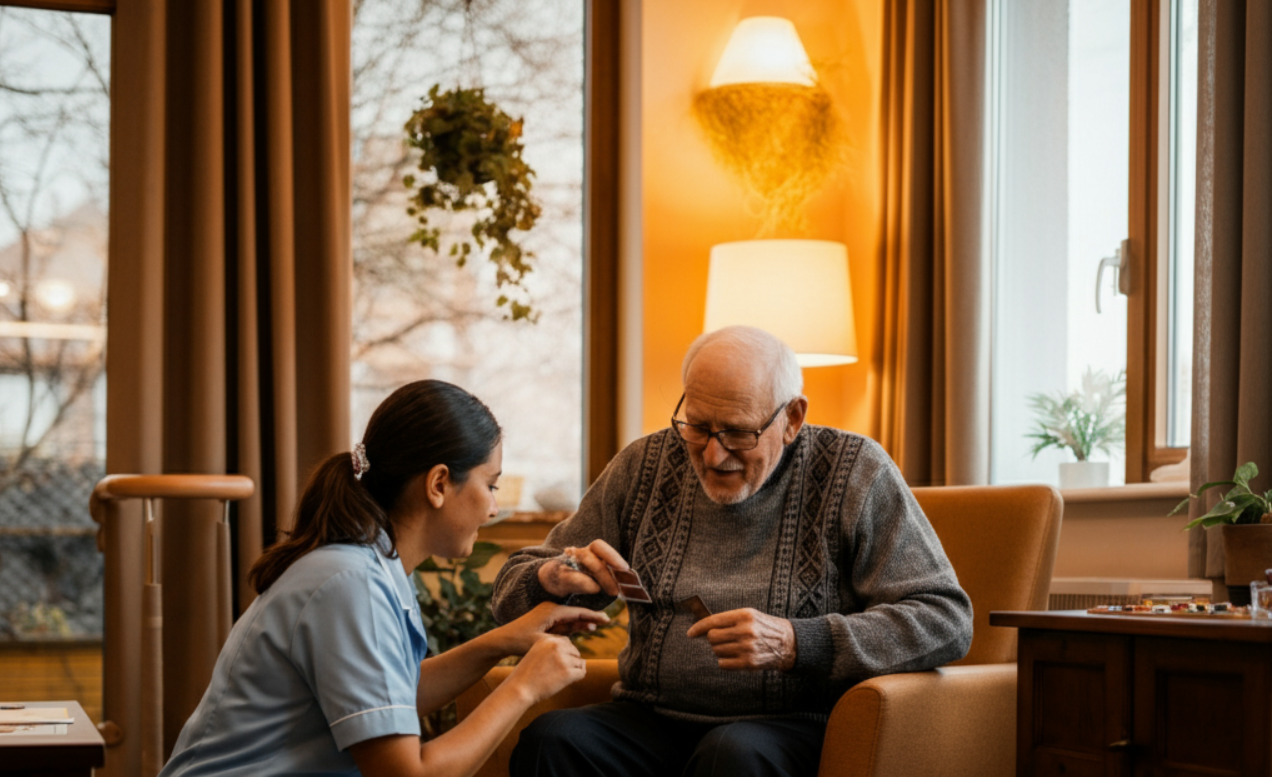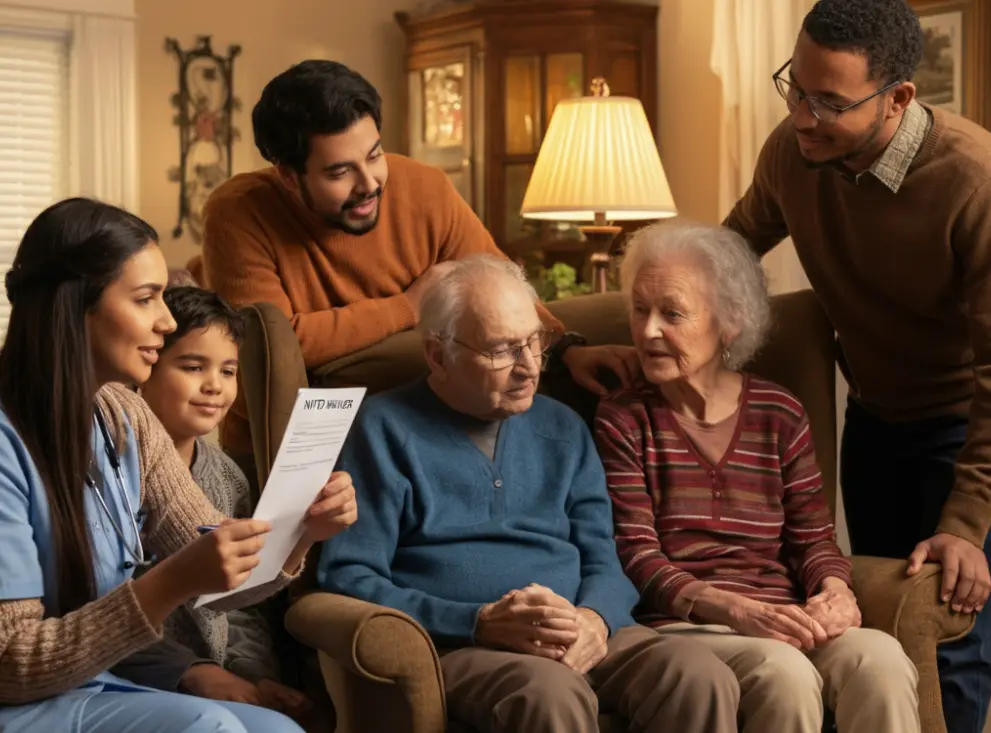Alzheimer’s disease (AD) is a progressive neurological disorder that affects memory, thinking, and behavior. The disease gradually impairs language skills, judgment, and the ability to interpret and convey information. As a result, individuals with Alzheimer’s may struggle to follow conversations, express themselves clearly, or remember recent events and information.
Communicating with individuals affected by Alzheimer’s can be frustrating for both the person and their caregivers. Common challenges include:
- Difficulty finding the right words or forgetting familiar words.
- Confusion or disorientation, leading to fragmented conversations.
- Impaired comprehension, making it hard to follow instructions or respond appropriately.
- Agitation or frustration due to communication breakdowns.
- Emotional withdrawal or social isolation.
Practical Communication Strategies
Despite these challenges, there are several strategies that can help improve communication and foster meaningful connections with Alzheimer’s patients.
- Use simple language and short sentences to convey your message.
Using concise sentences helps people with AD grasp information better. Complex thoughts can overwhelm them due to difficulty processing. Though initially odd, speaking with fewer words in a warm manner is kinder and less frustrating for seniors with Alzheimer’s.
Consider these six examples as initial guidelines but remain open to adapting and experimenting to discover what best suits both your older adult and yourself in different scenarios.
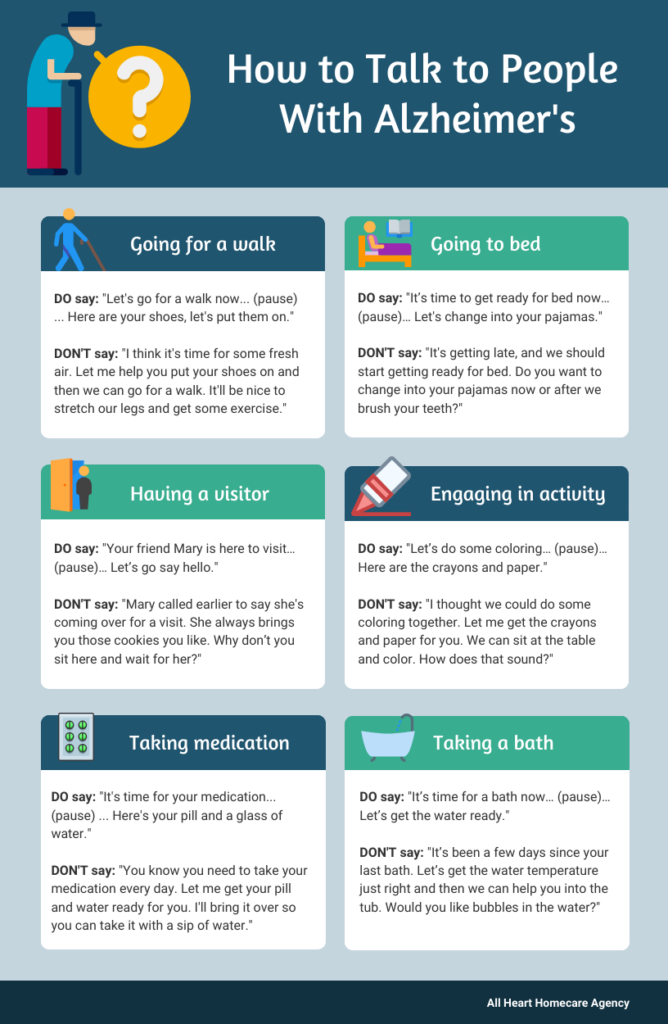
- Maintain eye contact
Maintaining eye contact with individuals suffering from AD is imperative due to its significant impact on their emotional well-being and communication. While AD can create a sense of confusion and disorientation, consistent eye contact serves as a fundamental means of establishing connection and reassurance.
By engaging in eye contact, caregivers convey a sense of presence and attentiveness, reinforcing to the individual that they are being heard and understood. This connection helps mitigate feelings of isolation and anxiety often experienced by those with dementia, fostering a sense of security and comfort in their environment.
Furthermore, eye contact facilitates nonverbal communication, allowing caregivers to better interpret the needs and emotions of the individual. Through subtle cues conveyed via eye contact, caregivers can discern potential discomfort or requirements for assistance, enabling them to respond effectively and empathetically to the individual’s needs.
While it may seem a simple gesture, maintaining eye contact holds profound significance in the care of individuals with Alzheimer’s. It serves as a vital tool for fostering connection, enhancing communication, and ultimately contributing to the overall well-being of the individual under care.
- Use gestures, facial expressions, and visual cues to aid communication
Imagine trying to navigate through a dense fog without any landmarks or signs to guide you. It would be disorienting and frustrating. For individuals with Alzheimer’s disease, their minds can sometimes feel like that fog, making it difficult for them to understand and process verbal information alone. That’s where visual cues, gestures, and facial expressions come in like beacons cutting through the fog.
When you’re talking to someone with Alzheimer’s, they might struggle to follow a complex conversation or remember words. But if you supplement your words with gestures, like pointing to objects or using hand movements to demonstrate actions, you’re providing them with additional context to help them understand. Touching and holding the person’s hand may help keep their attention and show them that you care.
Facial expressions play a huge role too. A smile can convey warmth and reassurance, while a furrowed brow might indicate concern or confusion. For someone with Alzheimer’s, who might struggle to interpret tone or intent from words alone, these facial cues can be invaluable in helping them gauge the emotional context of a conversation.
Visual aids, such as photos, drawings, or simple diagrams, can also be incredibly helpful. They provide concrete references that can jog memories or illustrate concepts that might otherwise be difficult to grasp.
Storyboards, for instance, can help an individual with AD to understand, remember and engage fully with a meaningful event. They can capture key elements and stages of an event with images which makes it easier for the person to understand the event and follow along. Think about the task – for example, Morning routine or Going to the grocery store, and then think of all the steps which will happen.
There are lots of symbols and resources which you can purchase to help with this, but a good tip is to also take photos within your own home and when you are out and about with the people and places you visit. This will help you to tell the story with as many familiar pictures as possible.
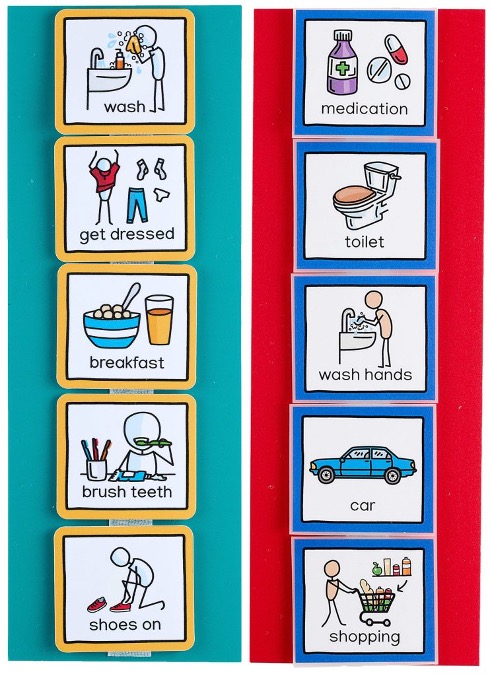
Source: dementiacarers.org
By incorporating visual cues, gestures, and facial expressions into your communication with someone who has Alzheimer’s, you’re essentially making their journey through that fog a little bit clearer and less daunting. You’re helping to bridge the gap between what they can understand and what you’re trying to convey, fostering better connection, and understanding in the process. And in a world where communication can often feel like an uphill battle, that’s no small feat.
- Be patient and allow ample time for the individual to respond
When older adults with Alzheimer’s are confused or repeating themselves, it’s not because they’re being stubborn or forgetful in the usual sense. It’s because their brain is struggling to make sense of things.
Arguing or correcting them can lead to feelings of frustration, confusion, and even agitation for the person with AD. It can escalate the situation and make communication even more difficult. Plus, it can damage the trust and rapport you have with them. They might start feeling like you’re not on their side, like you’re against them.
So, instead of arguing or correcting, it’s important to approach the situation with empathy and understanding. Listen to what they’re saying, even if it doesn’t make sense to you. Try to validate their feelings and reassure them. You could say something like, “I understand, that must be confusing,” or “It’s okay, we’re here together.” Redirecting the conversation or gently guiding them back to the topic can also be helpful.
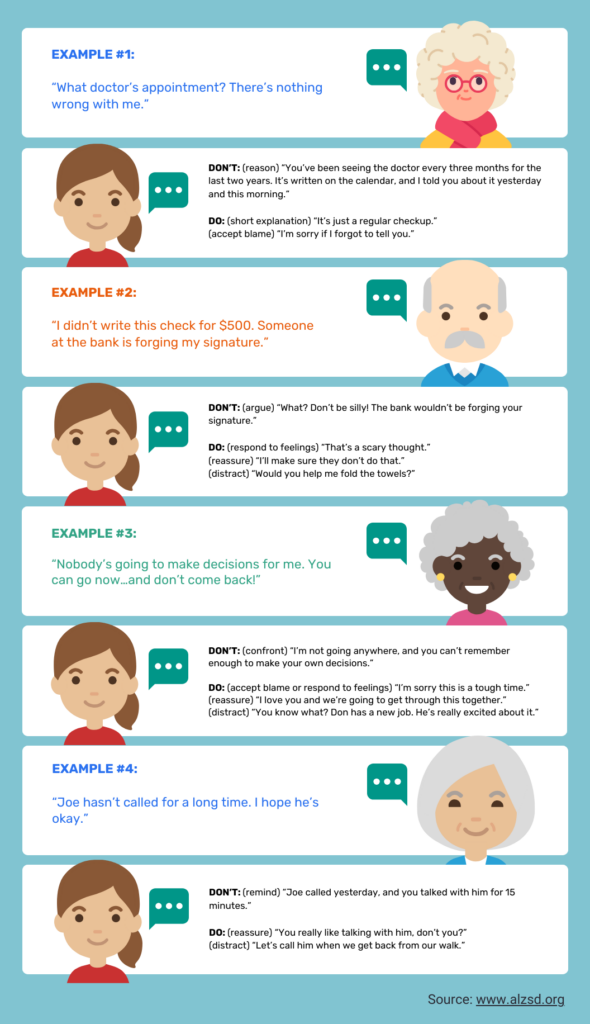
In Conclusion
Caregiving for someone with Alzheimer’s isn’t just about managing their physical needs – it’s about nurturing their spirit and preserving their sense of self. And communication, in all its forms, is the bridge that helps us reach across the divide and remind them that they’re loved and valued, no matter what.
At All Heart Homecare, we understand the importance of personalized care that allows individuals to maintain their independence while receiving necessary support. If you or your loved ones are seeking further guidance or information on how to care for people with Alzheimer’s disease, we’re here to help! Contact us today at 718-717-1164.









